These Cosmic Visions Include a Moon Parade and a Naked Nebula
Jovian giants and newly seen stars are among our picks for the week’s best space-related images
Hubble spies a rare triple transit of Jupiter, NASA sends up a new satellite to monitor soils, an astronaut snaps an Alaskan aurora from above and more in our picks for this week's best space images.
.
Soaring Soil Satellite
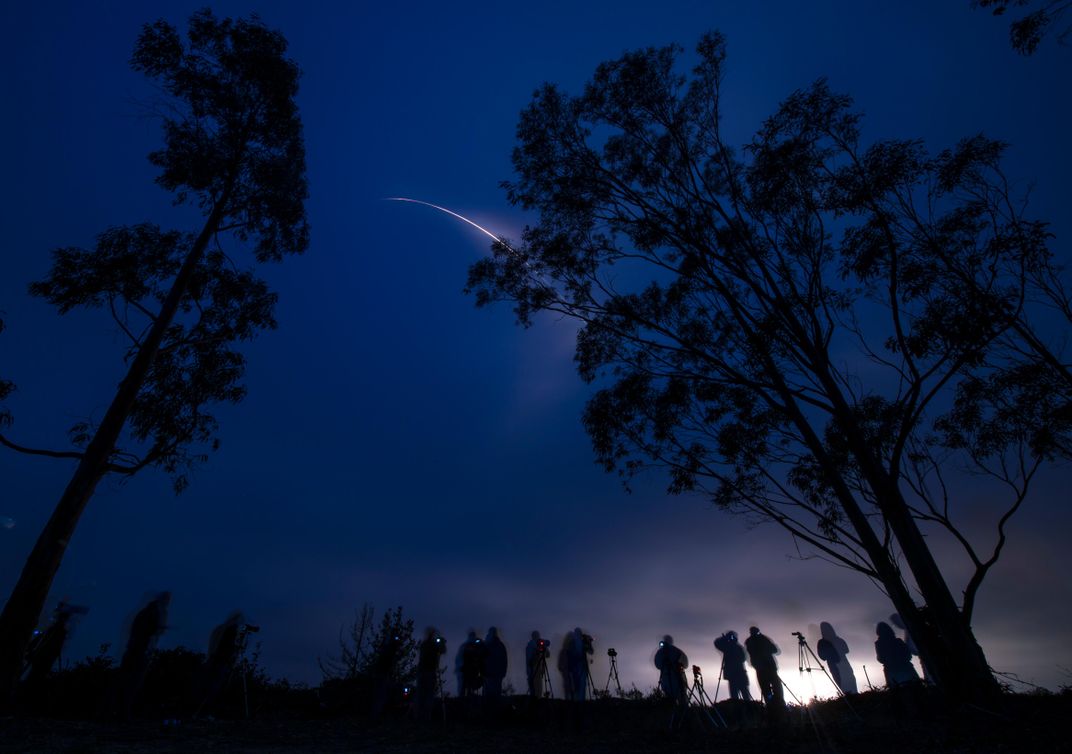
People gathered at Vandenberg Air Force Base in California to witness the pre-dawn launch of NASA's newest Earth-monitoring satellite, the Soil Moisture Active Passive probe, or SMAP. Every two or three days, the orbiting satellite will collect global data on moisture in the top few inches of Earth's soil. The comprehensive measurements will help scientists track how water moves in this understudied region and should help improve agricultural practices, weather forecasts and seasonal climate projections.
Moons on Parade
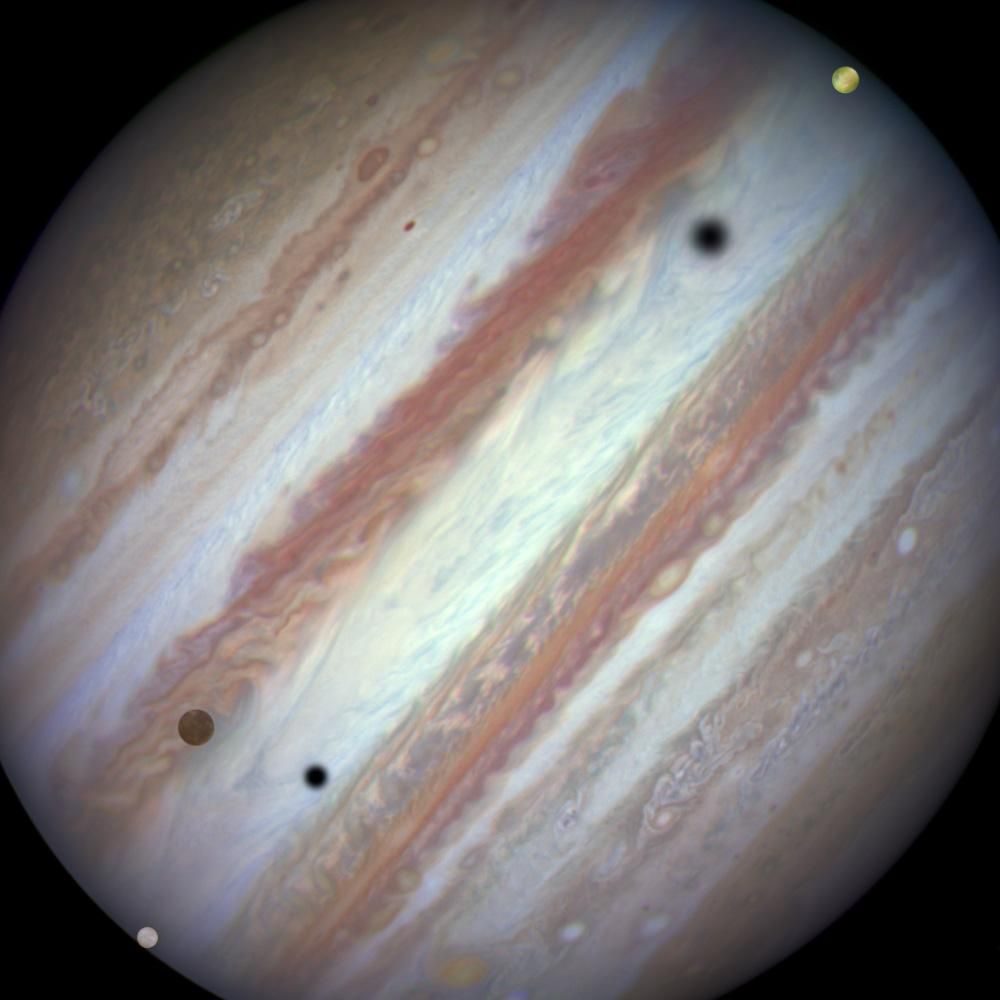
In a rare triple transit, the Hubble Space Telescope watched as three of Jupiter's moons passed in front of the stormy giant planet. The moons—Europa, Callisto and Io—are three of the so-called Galilean moons, the four largest natural satellites of Jupiter discovered by Galileo in 1610. In this view, icy Europa is seen at lower left, followed by dark Callisto and bright yellow Io. The proposed federal budget released this week includes $30 million to help develop a NASA mission to Europa, which is thought to harbor a global ocean beneath its icy crust that might support life.
Walk the Planck
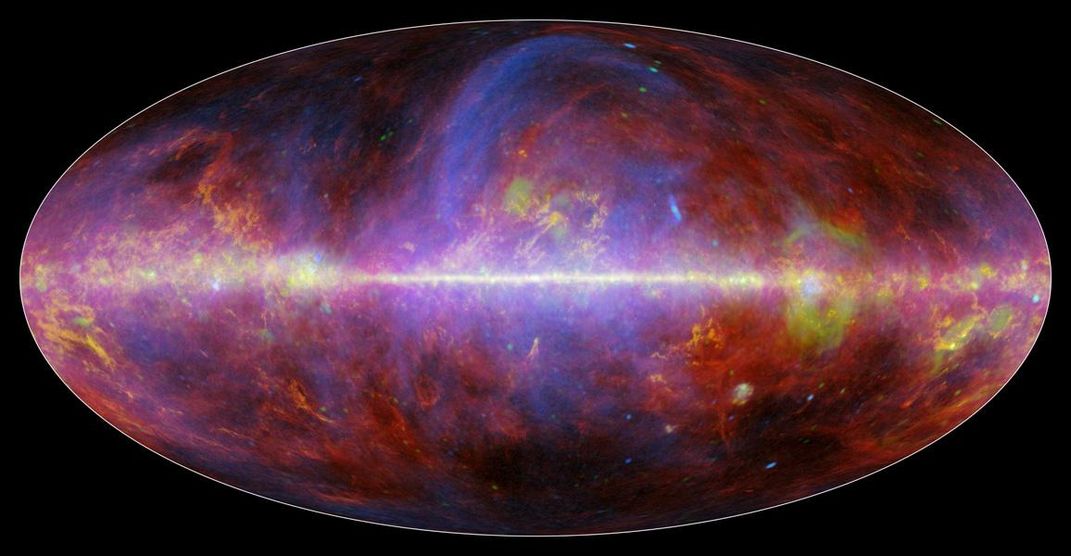
Combining microwave and millimeter wavelengths of light, the European Space Agency's Planck satellite has created this colorized image of turbulent activity in our Milky Way galaxy. Red shows hot glowing dust, while yellow marks carbon monoxide gas. The gas is concentrated along the galactic plane, where the densest clouds of material are forming new stars. Blue represents high-energy radiation created as charged particles are accelerated and flung into space by violent events such as supernovas. Green shows where free particles are having near misses, swooping close past each other and slowing down but not being stopped. Scientists can use images like this to better understand the structure of interstellar matter and how it interacts in our galaxy.
Aurora Cascade
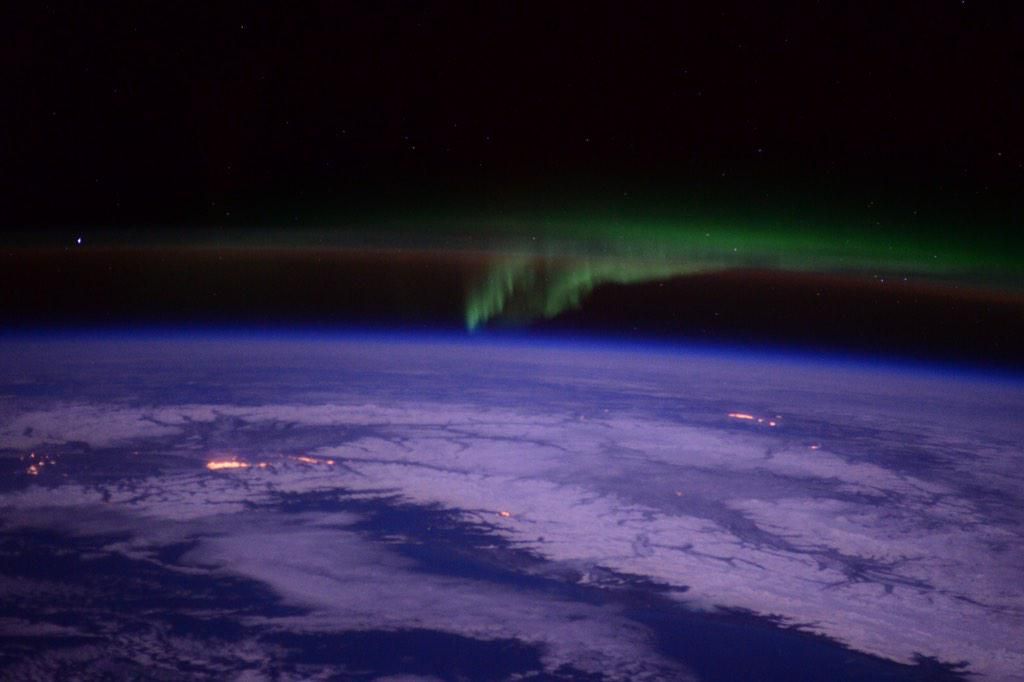
Even astronauts can be wowed by visions of aurorae—especially when they can see the light shows from the International Space Station. NASA astronaut Terry Virts snapped this picture of the aurora borealis over Alaska on February 5. Seen from about 270 miles above Earth's surface, the ribbons of light seem to sink into the atmosphere, sparked by charged particles from the sun colliding with air molecules.
Iraq Borderlands
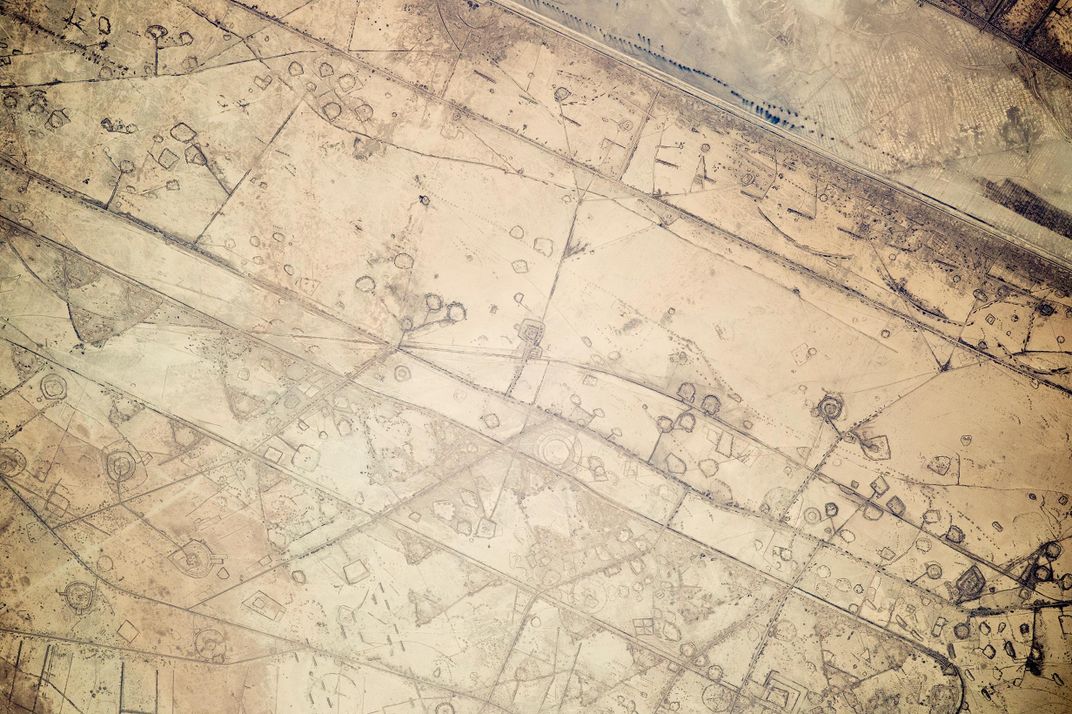
Seen from space, a stretch of the Iraq-Iran border near the Persian Gulf looks like an electrical diagram writ large. In reality, the structures are most likely military fortifications—earthworks and gun emplacements set along a network of long roads running parallel to the border. The picture was released on February 2 by NASA's Earth Observatory but was taken by astronauts aboard the International Space Station in November 2014.
Night of the Trifid
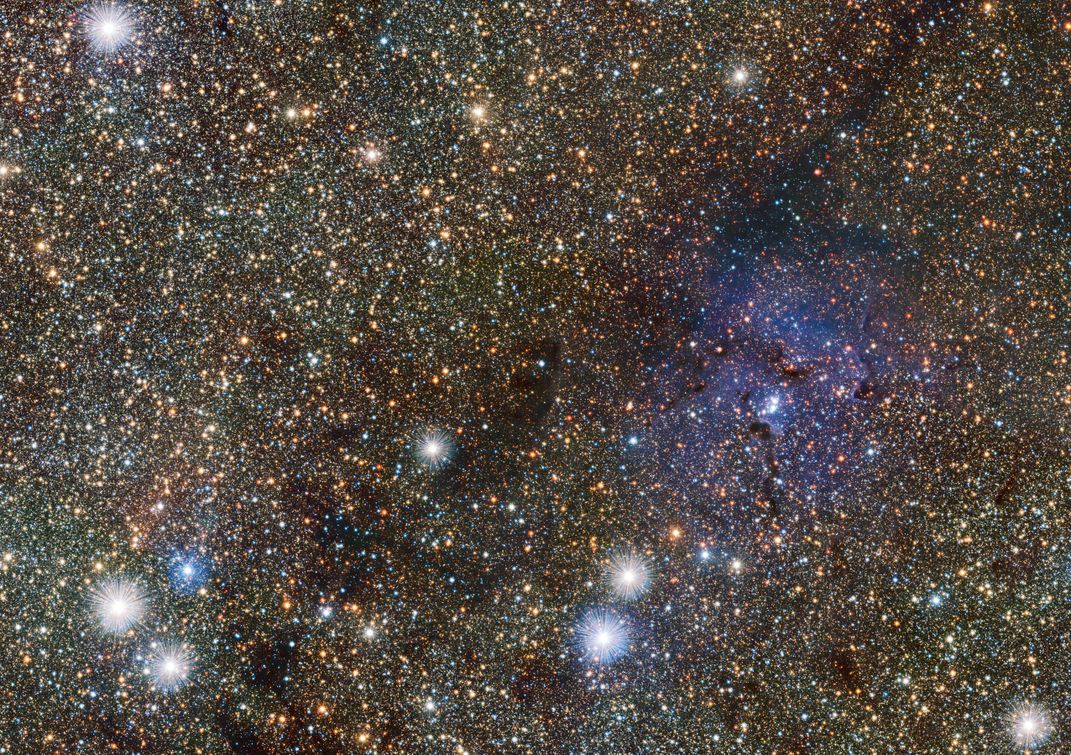
Glittering light a backdrop for a Hollywood party, this image reveals previously unseen stars in the Trifid Nebula, a cloud of gas and dust about 5,200 light-years from Earth. In visible light, the nebula's thick dust obscures the view of what's happening in the background. So the European Southern Observatory used its Paranal facility in Chile to capture infrared light, which can penetrate the dust. The riot of stars behind the nebula includes two Cepheid variable stars no one had seen before. These types of stars brighten and dim on a stable periodic cycle and so are useful for astronomers as markers for measuring cosmic distance.
Lunar Resources
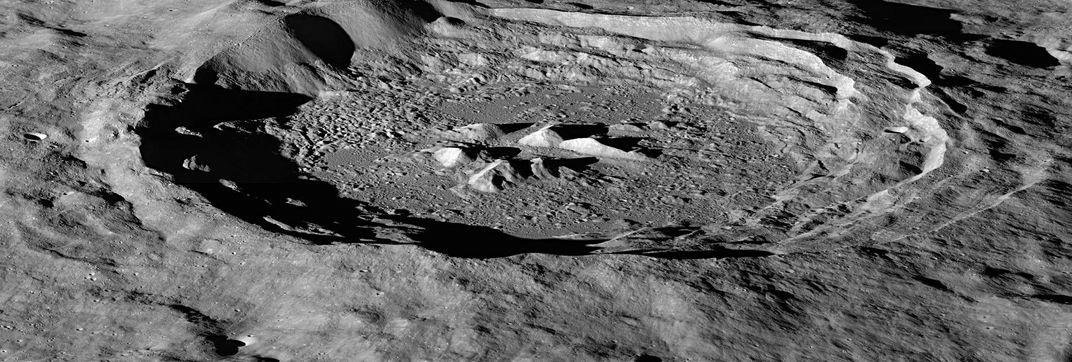
Getting supplies into space is hard, especially heavy but necessary items like water and fuel. That's why space-travel hopefuls were excited by the news in 2009 that there's abundant water on the moon, probably trapped as ice in shadowy craters near the lunar poles. The evidence comes from lunar orbiters, which can see a molecule called hydroxyl—a hydrogen atom bound to an oxygen atom—that probably formed from water. Now NASA's Lunar Reconnaissance Orbiter has helped narrow down the best places to land to find moon water: near crater walls that face the moon's poles. The probe found more hydrogen on the polar-facing crater walls, probably because they get less sunlight over time so less of their ice is vaporized away. The image above shows Hayn Crater, near the lunar north pole, with its pole-facing side in deep shadow.